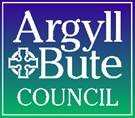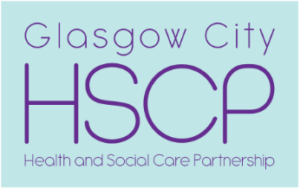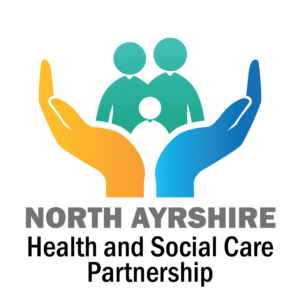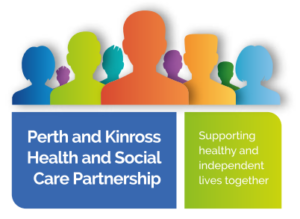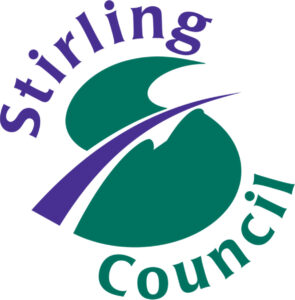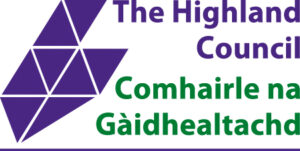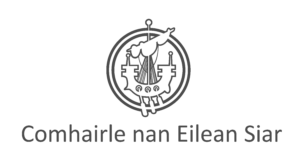Children’s Care and Justice Consultation
SOCIAL WORK SCOTLAND RESPONSE June 2022
INTRODUCTION
Social Work Scotland is the professional body for social work leaders, working closely with our partners to shape policy and practice, and improve the quality and experience of social services. We welcome this opportunity to comment on the proposals for changes to children’s care and justice provision.
As an organisation Social Work Scotland are aware of the challenges inherent in the current interface with other legal systems, and the implications for legislation of recent research around development and particularly neurodevelopmental understanding. The consultation’s efforts to take this on board along with changes required to progress the commitments of the Promise are acknowledged, and Social Work Scotland are supportive of this intent.
As with other recent proposals, however, our members, as the leadership in Social Work, have highlighted the resources and workforce necessary for successful implementation of the proposals. Without this, the intent is unlikely to be achieved. The gap between Scotland’s ambitious rhetoric and laudable rights position in relation to children’s care and wellbeing, and our collective ability to deliver has steadily grown over the past decade. The scale of this is gap and the increasing ask of a depleted workforce is reflected in the recent Setting the Bar Report1 published in June 2022, which highlights some of the increased demands on the workforce in the midst of diminishing resource. Structural changes related to the development of the National Care Service are likely to further exacerbate capacity to manage other practice and structural changes.
This gap between expectation and legislation, and ability to deliver can lead to disappointment among those who should be benefitting from the increased rights and improved processes and service. As such, Social Work Scotland would strongly note that any improvements and changes in legislation and guidance around care and justice must be fully funded in order to ensure that implementation is achievable.
The reflections within this response are drawn from consultation with our members at both practice and senior leadership level, and discussion with key partners. They reflect the core values of social work as a profession, and of our organisation and members, and as such reference some comments where there are dilemmas in managing the rights of all involved.
Consultation questions:
Question 1: Where a person has been harmed by a child whose case is likely to proceed to the children’s hearings system, should further information be made available to a person who has been harmed (and their parents if they are a child) beyond what is currently available?
Yes
If yes: what further information should be made available?
Only the fact that a referral has been made to the Reporter, with appropriate explanation of what this system means, should be provided to the person who has been harmed (or the person who holds parental responsibilities in relation to that person). This retains the rights of the child who caused the harm, and is in line with the processes for adults.
If yes: are there specific circumstances when further information should be provided and what would those circumstances be? Please give reasons for your answer
Information should be limited as outlined above.
Question 2: Where a person has been harmed by a child who has been referred to a children’s hearing, should SCRA be empowered to share further information with a person who has been harmed (and their parents if they are a child) if the child is subject to measures that relate to that person?
Yes
Please give reasons for your answer
While we have responded ‘yes’ to this question, our answer is dependent on careful consideration and safeguards on the extent and nature of the information to be shared. Everyone should have the same right to information about process and outcome, and to information which allows them to recover from the harm caused, but within a rights context which protects both the rights of the victim and those of the person who caused the harm. Those harmed by a child should not have any additional rights to information than a counterpart in the adult justice system.
Information should therefore be limited to any relevant conditions imposed on a child who caused harm i.e. to situations or conditions which specifically impact on the person who has been harmed. This may be where a condition restricts the individual’s movement to avoid access to the home or vicinity of an individual who has been harmed, when it is reasonable for them to be made aware of this. It is not reasonable for the person who has been harmed to be advised of treatment or other aspects of how the child is being dealt with, any orders imposed or treatment required or any personal detail. In our view this would be a breach of the child’s rights, and may also result in risk to the child.
Question 3: Where a person has been harmed by a child who has been referred to the Principal Reporter, should additional support be made available to the person who has been harmed?
Yes
Particularly where a child has harmed another child, the right support for the person who has been harmed should be provided. Victim support is already available for adults but is at best variable in provision and nature, and seldom involves therapeutic support. For healing and in line with our rights-based approach, good quality victim support should be available to all who have been harmed, whether the case is part of the Justice system or the Children’s Hearing system – people should not have fewer rights because they have been harmed by a child rather than an adult, or because of the system where the case is being managed e.g. if the child is below the age of criminal responsibility or has been diverted to the Hearing system.
If yes, what additional supports do you feel are necessary?
Support should be bespoke dependent on the nature of harm, age of child, and impact on the person harmed. In line with GIRFEC, which is as applicable for the child harmed as for the person causing that harm, the existing multi-agency approach is critical, utilising the Team around the Child to assess the need, and ensure the right plan for each child is in place. This ensures that any victim support is coordinated, and is part of the child’s plan – with a lead agency if required.
We suggest that good practice guidance is developed to inform services which might support those harmed, drawing on the voice of children, as well as wider victim support research and feedback. Good practice would include:
- Opportunity to talk to a trusted, trained and supported adult about their experience.
- ‘Therapeutic’ opportunities such as those based on art, or activities.
- Family supports to enable carer to understand and manage the consequences.
- A point of contact for child and carers for advice and crisis.
- A minimum offer of an initial counselling/therapeutic conversations.
For those who are children, development of the Barnahus model in Scotland will be critical in provisions of such supports. Bairns Hoose standards are currently being developed.
If yes, should this apply to all people who have been harmed or only in certain circumstances? (Please specify)
This should apply to all who have been harmed, though the mechanism for adults and children may differ. Consideration should also be given to equity of opportunity and whether this should therefore also be available to others dealt with within the Hearing system e.g. those children referred to the Reporter for care and protection ground due to abuse.
Question 4: Should a single point of contact to offer such support be introduced for a person who has been harmed?
Yes
If yes, should this be available to all people who have been harmed or only in certain circumstances? (Please specify) •
It should be available to all to avoid discrimination and inequity.
If yes, who should be responsible for providing the single point of contact? Please give reasons for your answers
This requires further consideration, given each situation will differ. While a single point of contact is desirable, it is complex and must link and coordinate with other provision such as named person and lead professional. For adults the single point of contact could be the current victim support service properly resourced to ensure that the service is always offered; for children given the links to the hearing system and GIRFEC, it could be an extension of the existing SCRA remit, or the named person or lead professional. All should be able to be accessed via one phone number or contact address, with safeguards to ensure that this does not overlap with existing care plans and provision. Regardless of who the single point of contact is, the expectation would be that they coordinator provision of support alongside others involved with the child or adult who has been harmed, not that they provide the actual support. As such, this requires careful consideration to ensure that implementation achieves the desired aim, and does not further complicate the landscape.
Question 5: Should existing measures available through the children’s hearings system be amended or enhanced for the protection of people who have been harmed?
Yes
Please give reasons for your answer
If yes, please provide details of how they should be amended or enhanced
We suggest that it is reasonable to undertake a review of the current options for the Children’s Hearing System to allow for more flexible and responsive options for all children but specifically children who cause harm. While this protects those harmed it is also a critical aspect of how The Promise commitment to reduce numbers in secure and to consider alternatives to custody for 16- and 17-year-olds can be fulfilled.
Use of Movement Restrictions Orders is currently very limited partly due to the strict criteria for application and concerns about risk and partly due to the lack of a framework for monitoring and implementation. Consideration of extending this option to cover those not immediately at risk of harm to themselves or others at a level which meets the secure criteria, would give greater flexibility – but would also require resources, a framework for implementation and monitoring and clear criteria. Restriction of liberty remains a serious consideration especially for a child, and there is an inherent danger that availability of this option where secure criteria is not met will lead to greater use, with potential for restrictions being imposed unnecessarily. Similar concerns/requirements apply to provision of electronic monitoring for young people, and both require a monitoring and support framework to make them viable. This is not therefore an easy consideration to develop.
Connected to any amendment or enhancement of current options available to the Hearing System, we suggest that this is aligned to the work of the Children’s Hearing Review Group, led by Sheriff Mackie. This group is undertaking a radical review of the Hearing System, and is currently in the co-design phase. Consideration of extending or amending disposal options would best sit within that context.
Question 6: Should MRCs be made available to children who do not meet the current criteria for secure care?
Yes
Please give reasons for your answer •
If yes, what should the new criteria for MRCs be?
See response to Q5 above
Question 7: Should any of the above options be considered further?
Yes
If yes, which option(s)?
Please give reasons for your answer, including any positive or negative implications of any of the proposals.
Enabling all children under the age of 18 to be remitted to the Principal Reporter for advice and disposal in their case even where they had initially been prosecuted and have pled, or been found, guilty.
This is a caveated ‘yes’, however. If the option is there for a child to be remitted to the Children’s Hearing, even where they have pled or been found guilty, there must be suitable disposals available to the hearing system, beyond the current limited options for Compulsory Supervision Orders.
Social Work Scotland applaud and support the move, based on knowledge and research into brain and psychological development, that those under the age of 18 – and indeed beyond – are still developing and maturing. Moving the age of remittal to 18 years of age acknowledges this and aligns with the definition of a child in the Children and Young People (Scotland) Act 2014. It also brings to the fore the matter of suitable skills and knowledge to work with adolescents, and whether the current Hearing system encompasses sufficiently this area of expertise.
Young people subject to the Justice system will currently have access to group work options, unpaid work, and individually tailored one to one work with a Justice Social Worker as part of a Community Payback Order (CPO) or Structured Deferred Sentence. These options are seldom available to children via a compulsory supervision order, designed to meet a range of need within one process. To provide effectively for increasing the age of remittal to 18 years, this aspect must firstly be considered, developed and resourced. Would, for example, there be the need to consider additional ’sentencing powers’ for the Children’s Hearing? There are cases where a 16 – 18-year-old responds very positively to the structure and rigour of a CPO.
16 – 18-year-olds are also, however, subject to a range of different legislation which defines them as adults in different ways – at 16 they can marry, at 17 drive a car and at 18 vote (and do this at 16 in local Government and Scottish Government elections). This confusing landscape of adulthood must also be resolved to make the context for remittal and change of age of referral sensible, and logical.
Given the range of change required to ensure the right context, provision and skill is in place, we would suggest that this step is not taken before such work can be completed.
We are not supportive of the following:
a Promoting wider use of the existing ability for the children’s hearings system to require support to be offered to a young person on a voluntary basis following the termination of any CSO by virtue of that individual turning 18
The ‘cliff edges’ experienced by children are complex and difficult to navigate. They are, however, a feature of any society and of the various legislative definitions of child and adult, and can be found in education, health, benefits entitlement and employment as well as social work and social care. Options for children to have ongoing voluntary support via the aftercare legislation are contained in the Children Leaving Care Act 2000 and Children and Young People (Scotland) Act 2014; there is therefore no need for further legislation in this area – though a review of the guidance relating to after care may be helpful, to strengthen the consideration of options or support for those who were subject to compulsory supervision as a result of offending behaviour.
b Increasing the age to which children can remain subject to measures through the children’s hearings system for a period beyond the child’s 18th birthday
While the intent behind this proposal is understood in terms of developing knowledge of brain developments, the complexities involved in adapting one part of children’s legislation to cover adults would be complex and result in further inequalities and confusion e.g. in relation to child and adult protection, human rights, GIRFEC, and the interface between adult and child services and provision. As there are child/adult boundaries in place in other areas, this could also cause additional confusion with partner agencies. We would also note that it would be inappropriate to consider a change for those subject to supervision on offence grounds and not care and protect grounds – and to extend for care and protection grounds brings in a particularly complex and challenging dynamic.
Question 8: Please give details of any other ways in which the use of the children’s hearings system could be maximised, including how the interface between the children’s hearings system and court could change
As it states in the Criminal Justice Social Work Report and Court Based Practice Guidance (Scottish Government 2010), “Keeping young people within the child-care system or diverting them from the adult criminal justice system to the child-care system, should be a priority and is consistent with the United Nations Convention on the Rights of the Child.” Furthermore, the guidance is clear that the report writer must always comment on the option of remittal back to the children’s hearing where the subject of the report meets the criteria of being under 17 years and six months. (The reason for 17 years and six months relates to avoiding the scenario where the time to remit a case to the Hearing would mean the person would be over 18 by then. If all 16 – 18-year-olds were remitted to the Children’s Hearing then existing legislation, for example relating to Community Payback Orders, would require amendment.)
However, it is questionable to what extent this happens routinely. There might be diverse reasons for this e.g. the justice social worker, sheriff or defence agent is unaware. Introducing a mechanism to ensure this happens in every case would be helpful. One means to do this would be to require the court to record this has been considered and the reasons for the decision to refer back or not.
Question 9: Should any of the above options be considered further?
Yes
If yes, which option(s)? Please give reasons for your answer, including any positive or negative implications of any of the options. We are particularly interested in implications for people who have been harmed
Social Work Scotland welcome the opportunity to comment on how the court process for children can be improved, while recognising Scotland’s commitment to responding to children’s needs in an appropriate children’s context wherever possible as part of a trauma informed approach. Regardless of whether they are witnesses or those who have caused harm, children are firstly children, and are best able to respond and provide what is required when in a setting which takes this into account, and when managed in a trauma informed manner. This is particularly the case where a child has additional needs.
Any formal or court setting will be difficult for a child. A move to no, or only a very few, children who offend appearing in court and the development of a child centred justice approach throughout the system for those who do require to appear is one which Social Work Scotland support. As the host of the National Joint Investigative Interview Training and Practice Development Team, which is driving forward aspects of the National Child Protection Guidance in relation to the Scottish Child Interview Model, we are well cited to comment on application of a trauma informed and cross agency approach to child interviews. Given this insight, we are also contributing to design of Age of Criminal Responsibility interviews, and the development of the Barnahus model in Scotland.
At the core of all of those approaches is that children are first and foremost children and, regardless of whether they have been harmed or have caused harm, should be treated in a manner which respects their stage of development and the inherent trauma involved in the process. This applies to both the Children’s Hearing System and the court system. It is important to recognise and acknowledge that the Children’s Hearing System, while more child centred than the court process, has developed in a manner which, while intended to strengthen the rights of those involved, has in practice led to a less child centred system where the child can become easily lost. The ‘issues list’2 published by the Review for the Children’s Hearing and developed along with children and young people evidences this, and the current work aims to re-design the system to ensure that it operates in a more child centred manner.
Social Work Scotland therefore agree with the detail in the consultation about the research and evidence for a child centred system and approach, including the importance of being seen and felt to be a fair system by the individual involved. Where a child feels they have a voice that is heard, and they are treated respectfully, they will both understand and be better able to take forward recommendations and actions. While a court setting is unlikely ever to be the best setting for a child, Social Work Scotland are of the view that for a very small minority court will remain the appropriate place for them to be dealt with, for public safety reasons e.g. those matters which would constitute solemn proceedings should be jointly reported and considered for prosecution. But in that context, the process should be as trauma informed and appropriate to the needs of the child as it is possible to make it.
The reality of the principle of having no children within a custody setting, and the reality of putting this in to practice are however not as simple.
Comments on the options:
A re-examination of the decision-making framework between which system should deal with a child’s case and the consequent interfaces between the children’s hearings system and the courts, as outlined currently in Section 4 above.
Most children in conflict with the law will already be dealt with by the Children’s Hearing System, as the primary system which deals with children in need of care and protection or who offend. For the majority of children who offend, their cases are passed to the Reporter to deal with, but there are some anomalies in the rules relating to this, for example currently 16–17-year-olds may only be diverted if they are already involved with the Hearing System. A small number of children who offend continue to be dealt in the adult court system, often those who commit serious offences, or who offend along with an adult.
Re-consideration of the framework for decision making around when a child’s case is dealt with in court and when it is remitted to the Hearing would be helpful. This should:
- Underline that the GIRFEC framework applies to all considerations
- Take in to account the views of other professionals already involved in the Team Around the Child, and particularly the lead professional and named person
- Include changes to allow 16- and 17-year-olds not already involved with the Hearing System to be referred to the Reporter
- Allow for decisions about which system should deal with a case to be changed where further information comes to light which makes this appropriate.
- Develop principles for decisions making which reflect the child at the centre, UNCRC and consideration of the situation through a trauma informed lens.
We note however that alongside this there would be a need to ensure that the harmed person feels they are seeing justice done. Such moves will require careful ‘messaging’ and information for people who have been harmed about what is behind those decisions to ensure that the harmed person knows that justice will be done regardless of the forum within which a case in managed. Changes to the decision-making process should therefore sit alongside increased options for Children’s Hearings, and increased consideration of victim support provision – including restorative justice.
The continued use of traditional court settings, recognising the local innovations that are already underway across different areas of Scotland to improve children’s experiences.
Social Work Scotland support the view that children should not be dealt with in a court setting. We recognise however that for some this may be unavoidable. In those very few situations, the court process in its entirety from investigation to sentencing, should be amended to fit with our knowledge about children’s development and impact of trauma.
This could not, in our view, be managed within the traditional court setting, and would require significant changes to practice and we have outlined in our response to option 3 below what consideration might be required.
Making changes to practice, conduct in court and support for all children, whilst retaining children in court settings
For a court process to be truly aligned to The Promise, and UNCRC principles, changes would be required in relation to:
- Formality in dress and process
- Setting – avoiding the formal court room and hierarchy, including potentially taking the ‘court’ to the young persons, and expanding remote options
- Preparation for court
- Language
- Format and avoiding the adversarial nature of the current system including within any cross examination
- Provision of support for the young person
Question 10: Where a child requires to be deprived of their liberty, should this be secure care rather than a YOI in all cases?
Yes
Please give reasons for your answer
Social Work Scotland agree with the consultation document and related references such as The Promise that ‘unless there is strong evidence to the contrary, no young person under the age of 18 should be placed in HMP & YOI Polmont when a place in a secure care unit would be more suitable’3 Deprivation of liberty is a serious step, even more so for a child and should only be taken in very specific and unusual circumstances where there is significant risk which cannot otherwise be managed. Where detention is necessary a child should be accommodated in as appropriate setting as possible. In Scotland this would be a secure setting rather than a prison where a nurturing and child centred approach is more easily provided, despite restrictions.
Please note however that availably of secure accommodation with suitably skilled staff and arrangement which protect both the specific individual child and others in that accommodation is essential to allow this step to be taken. See comments on Question 11.
Question 11: Should there be an explicit statutory prohibition on placing any child in a YOI, even in the gravest cases where a child faces a significant post-18 custodial sentence and/or where parts of a child’s behaviour pose the greatest risk of serious harm?
No
- If no, in what exceptional circumstances should use of a YOI be considered? Please give reasons for your answer
While this should be the direction of travel, a range of steps are required before we could reach this position safety in Scotland. To mandate that no young persons under the age of 18 may be placed in YOI currently would lead to unintentional consequences including risk to others. Until the future nature, context and availability of the secure provisions in Scotland is resolved, it would be inappropriate to take this step. Moreover, training and understanding of appropriate frameworks such as Care & Risk Management (CARM) and the Risk Management Authority’s Framework for Risk Assessment, Management and Evaluation (FRAME) would ensure a consistent approach and understanding of the language around risk, whilst more widespread use of assessment tools such START-AV would similarly provide consistency.
The criteria for secure care are that a child is a significant and immediate risk to themselves or others. This means that children may be in secure care where their trauma is expressed in behaviour damaging to others, but also behaviour damaging to themselves. This requires a particularly skilled workforce, and facilities and supports. We are aware from Members of situations where secure units have felt unable to take a child due to the matching issues and the level of risk resultant from that child’s specific presenting issues.
Other factors also require consideration before we would agree with an explicit statutory prohibition. Whilst the number of young people held in HMYOI Polmont is declining – in 2021, the average population reduced to 199 residents; and by the end of Quarter 4 2021-22, the average for the period had decreased to 179; with the untried male population increasing from 83 to 91 and the male convicted population decreasing from 86 to 75 with 21 under the age of 18 (382 aged 19 – 21) (SPS Quarterly Public Information Page January – March 2022) – young people remanded, and subsequently sentenced, may include those considered the ‘critical few’ and subsequently managed under the Multi Agency Public Protection Arrangements (MAPPA) or vulnerable to radicalisation and/or charged with terrorism offences. The ability of secure care placements to manage and mitigate the risks associated with this requires careful consideration.
An additional factor is that placement in secure requires the acceptance of the placement by the manager of the secure unit, so local authorities, while responsible for implementation of a secure/court order, have no control over availability of a secure placement. This places Chief Social Work Officers in a risky position both legally and in terms of keeping the child and community safe if no secure unit is able to take a child who presents a serious risk to themselves or others. It also forces consideration of placements in England and Wales in contravention of the commitment to end this practice and maintain children close to their home, communities and families, and those important to them, with resultant links to the capacity issues noted in our introduction.
We therefore suggest that this step is delayed until related national work around secure provision is concluded, and we have in Scotland the provision able to provide for Scottish need. This includes availability of the level and nature of accommodation required (taking in to account the significant mental health related issues), the range and skill base of staff, and the protection of all those who require to be deprived of liberty. Work on alternative to custody and secure care is also relevant and brings in the interface with other wider threads of work such as Electronic Monitoring and how this relates to children.
Question 12: Should existing duties on local authorities to assess and support children and care leavers who are remanded or sentenced be strengthened?
Yes
Please give reasons for your answer • If yes, please provide details of how could this be achieved
See our earlier response. We would not recommend additional legislation but do consider that the guidance relating to Aftercare where a child has been looked after could be strengthened to specifically reference good practice and applicability of aftercare to those who have been remanded.
Question 13: Do you agree that the three above changes related to anonymity should be made?
- Yes to all changes
Please give reasons for your answer
Social Work Scotland supports all the proposed changes but would underline the importance of clear definitions around ‘protecting the public from serious harm’ and ‘in the interests of justice’ as this terminology is open to differing interpretation.
Question 14: Do you agree that the regulatory landscape relating to secure care needs to be simplified and clarified?
Yes
Please give reasons for your answers • If yes, please provide details of how this could be achieved
Amending the age where a child can be referred to the Reporter will allow current 16 and 17 year olds not already in contact with the Children’s Hearing to access secure care where that is necessary will simplify the landscape, and remove the current inequity.
Any further amendments would require careful consideration to ensure that there are no unintended consequence and that secure care is accessible where the level of risk is such that it is needed for the protection of the child or others. The option of secure care should remain available where required to meet individual circumstances and need, which inherently means that a number of legislative routes to secure care will be required.
Question 15: Do you feel that the current definition of “secure accommodation” meets Scotland’s current and future needs?
No
Please give reasons for your answers. If no, please provide details of how this could be changed
The current definition of secure care requires the child to be an immediate risk to themselves or others to a degree that only deprivation of their liberty can mitigate. A tight definition is critical, given any secure order leads to a child’s liberty and rights being restricted by placement in a locked establishment.
However, the current need for a child to be an immediate risk to themselves or others, means that there can be a ‘cliff edge’ position where the risk diminishes but remains significant. This makes smooth planning and continuity for the child difficult to achieve, and by definition means children often require to move placements several times. Resolution of these dilemmas is not easy, and we would propose further consideration is given to developing options which may achieve a more flexible and child centred approach to without unintended consequences, and whether amendments to the current guidance rather than legislation might achieve the desired continuity of care. This work could also consider security in a wider manner, taking account of deprivation of a child’s liberty for mental health reasons, and whether secure care in its current form is suitable and appropriate for this need, and/or what adaptations to the definition and therefore provision would be necessary.
Question 16: Do you agree that all children under the age of 18 should be able to be placed in secure care where this has been deemed necessary, proportionate and in their best interest?
- Yes through all routes
Please give reasons for your answer
Children are first and foremost children, and placement in a secure establishment where their rights are limited, even for their own protection, should always be a last resort, and in an environment which is as child appropriate and nurturing as possible. Therefore establishments as close as possible to residential care should be available to all children in this situation, in line with good practice and research evidence.
Question 17: Should the costs of secure care placements for children placed on remand be met by Scottish Ministers?
Yes.
Please give reasons for your answer
Scottish Ministers covering these costs ensures equity with how costs are covered for others who are remanded. In addition it should be noted that the period spent in remand is out with the control of the Local Authority.
Question 18: Is a new national approach for considering the placement of children in secure care needed?
Yes.
Please give reasons for your answer • If yes, please provide details of what this approach should look like
The ‘how’ of this requires further consideration. There is a need for equity of access to secure provision, and a process which enables prioritisation of those most in need. However, the range of potential routes to secure care, and differing legal conditions must be considered, along with the impact and any consequences of such changes for the current statutory role of Chief Social Work Officers.
Question 19: Is provision needed to enable secure transport to be utilised when necessary and justifiable for the safety of the child or others?
Yes
Please give reasons for your answer
Transportation of vulnerable and at times distressed children, who are a risk to themselves or others has long been an area of challenge for local authorities and others. There is currently no standard for secure transportation of children or clarity on what is acceptable. This leads to some children being transported in situations which are not acceptable or child centred, and which cause additional trauma to the child. This includes amongst others, use of restraint, not having a familiar person with them, and lack of appropriate knowledge of the child’s needs and circumstances by those undertaking the transport. Feedback from children confirms that this is a scary and difficult process which adds to their distress.
Currently transport is undertaken in a range of ways. Sometimes this is able to be carried out by a social worker or other know individual. In other situations where this would post too great a risk transport is spot purchased form external agencies all of whom are based in England, thus incurring greater costs, and contributing to delays in children being able to be taken to the secure unit, with all that means for them.
Work is underway to develop suitable and child centred standard for transport. To achieve this however will require resources, not only in financial terms for local authorities but also to cover increased local authority demand around risk assessment, and training, equipment, staffing and monitoring.
Question 20: Are there any other factors that you think need to be taken into account in making this provision for secure transport?
Yes
Please give reasons for your answer • If yes, please provide details of these factors
Please see response to Question 19 above.
Question 21: Do you agree children should be able to remain in secure care beyond their 18th birthday, where necessary and in their best interests?
Yes
If yes, for all children or only those who are remanded or sentenced? If yes, how long for?
- For another period (please specify)
Please give reasons for your answers
As noted earlier in this response, the legislative landscape for when a child becomes an adult is complex. While appreciative of the consideration behind this question, retaining an adult in a secure establishment designed for children raises a variety of issues. This includes areas such as the rights of other children and the adult concerned, security, appropriate employment/educational provision, and skill set of staff.
As such, simply allowing a person now an adult but convicted of a crime and sentenced as a child to remain either for the duration of their sentence, or for a specific period, has a multitude of implications for the rights of others residing in the secure unit, for the expectations of establishments where they reside and in terms of staffing.
We have however indicated that we support ‘another period’. This is because we can see limited situations where remaining in the secure unit for a very short period may be appropriate e.g. where the sentence would be completed within a maximum of three months after the individual’s 18th birthday. This would allow the sentence to be completed in a known establishment, and to have a specific and detailed focus for that period around moving on and the skills and resilience needed to return successfully to their community. The issues noted above would still require to be considered, but may be less intense if the extension period is very short with such a specific focus.
We acknowledge that there may be a comparison made with continuing care legislation and the right of other young people to remain in their care setting beyond the age of 18 where they wish this and the provider is willing. The principle of allowing looked after young people additional time in a familiar and appropriately nurturing setting to develop their capacity to successfully manage adulthood is right, and particularly so for our most vulnerable young people. The exclusion of secure accommodation from the right to continuing care we also consider to be appropriate, given this type of care involves a young person being detained, and by default, a decision that the risk to themselves or others is such that their rights must be curtailed. We would suggest that learning from the challenges of implementing the continuing care legislation may assist with consideration of some of the issue we have outlined and inform discussion before any changes to the limitations of secure in this regard.
Question 22: Do you agree with the introduction of pathways and standards for residential care for children and young people in Scotland?
Yes
Please give reasons for your answer
If yes, please provide details of what measures and provisions are needed and how you think this should operate in practice
Social Work Scotland are supportive of reducing the number of cross border residential placements, both from and to other parts of the United Kingdom. There are many well-rehearsed outlines, including our own response to the cross border DOL consultation4 of the practice and care reasons for why this does not best meet the needs of a child, including challenges for the child and responsible authority of placements at such distance and in another country; and where there are competing legislative frameworks, the difficulties in accessing health and care services, and the implications for the area where the child is placed. While recognising that in exceptional circumstances a placement at a distance may be indicated, this should be a very rare and exceptional scenario. Where deprivation of liberty is involved, these matters are even more significant.
We acknowledge the challenges in England of a lack of secure and residential provision which is driving the placement of children in Scotland, particularly those subject to Deprivation of Liberty orders, and would lend our voice to that of the Scottish Government and the findings of the Competitions and Marketing Authority5 about the urgency of resolving this matter. Within this landscape, it is critical that the Scottish care system and related services can suitably meet the needs of Scotland’s children. This requires strategic and joined up planning at national and local level.
Social Work Scotland has contributed to consultation6 and resultant work to implement new regulations around the interim solution for cross border Deprivation of Liberty orders, and will continue to work with the Scottish Government on longer term options. We are concerned that children’s liberty may be restricted in ‘standard’ residential facilities, often because secure accommodation is unavailable, something which for Scottish children is not an option. The current lack of monitoring or oversight of such placements is a concern. Therefore, we support the development of additional standards and pathways for residential care to cover situations where liberty or rights are to be restricted and would offer the support of Social Work Scotland in developing these.
This work is complex, particularly given the consultation suggesting around local need, but to meet the commitment of The Promise and the needs of Scotland’s children, this feels appropriate.
Question 23: Do you agree that local strategic needs assessment should be required prior to approval of any new residential childcare provision?
Yes
Please give reasons for your answer
If yes, please provide details of what measures and provisions are needed and how you think this should operate in practice
Social Work Scotland is supportive of the use of strategic needs assessments for all provision and consider that reference by providers seeking registration to a local strategic needs assessment and discussion with the local authority area and partners would be a useful tool as part of the registration process. This would ensure a link between provision and local need. However, as part of the Integrated Children’s Service planning process there are limitations to how much this will fully inform need in the area and the availably of resources to meet the needs of local children. This is because of a range of actors:
- Small local authority areas will often rely on neighbouring authorities, or work in partnership with them for certain provision.
- Placements across local authority boundaries are often more local for a child than those within authority boundaries.
- Where particular needs such as disability or specialist provision are concerned, or where a level of deprivation of liberty may be indicated, a national needs assessment is required, and often more national provision is the only manageable way to meet those limited but significant needs. This would not be provided, with implications for Scottish children if we rely on local needs assessments.
We suggest thought is given to a way of understanding need at both local and national level to inform any registration.
Question 24: Do you agree that there should be an increased role for the Care Inspectorate?
Yes
Please give reasons for your answer
If yes, please provide details of what measures and provisions are needed and how you think this should operate in practice
As the registration body for care provision, the Care Inspectorate have a core role in registration and monitoring. Any establishment offering to take children on DOLS should ensure that the Care Inspectorate is informed and gives approval to specific amendments to registration. This should involve carefully agreed expectations around what safeguards must be in place, the implications for other children who may be in placements, notification of other authorities with children in placement, confirmation of notification to the local authority and approval by CSWO, confirmation that other local support services are available e.g. education including special provision, CAMHS and any implication of this for other children etc. Our view is that depriving a child of liberty in a non-secure setting brings with it significant risks which must be carefully mitigated.
Question 25: Do you agree that all children and young people living in cross-border residential and secure care placements should be offered an advocate locally?
Yes
If yes, please provide details of how you think this should operate in practice
While we have answered ‘yes’ to this question, as an opportunity to express views and assistance to do so is crucial, we would ask that further consideration is given before progressing this proposal, with particular thought to what this might look like, whether local provision is necessary and how it would be funded.
We would also contend that restricting this service only to cross border residential placements and not to other cross border placements of looked after children – fostering and kinship, and pre-adoptive placement – creates an inequality not in keeping with our values and ambitions in Scotland.
The use of ‘independent advocacy’ can be a valuable provision, but it is also an unregulated service provided to vulnerable children. Provision therefore varies in nature and quality. We also suggest that as all local authorities must have a children’s rights officer and many have developed children’s rights services, that linking to this provision rather than undertaking a national/local contract or approach may be more suitable. Discussion with the Scottish Children’s Rights Officer Network (SCRON) and Children’s Commissioner may be helpful, enabling both local and national perspectives to be taken in to account. Additionally, consideration of the knowledge and expertise needed around the differing legal contests in England and Scotland would be critical.
Any extension of existing local provision for all cross border residential (or looked after) provision would also require to be funded.
Many young people on DOLS may already have someone they trust and utilise to help them share their views, speak for them if required, and uphold their rights. This may be an advocate or someone else such as a previous carer, social worker or other individual. The young person must be given the choice around who works with them, or if anyone does so.
Question 26: Whilst there are standards and procedures to follow to ensure restraint of children in care settings is carried out appropriately, do you think guidance and the law should be made clearer around this matter?
Yes
If yes, please provide details of how this could be achieved
This is an area of concern for many within social work and particularly residential care, and one which our Members have been considering for some time. Restraint in many adult settings such as leaning disability is not acceptable. Whilst permissible under the Mental Health (Care & Treatment) (Scotland) Act 2013 in order to prevent harm to an individual in distress or those around them, physical restraint is seen as a last resort in adult mental health and/or learning disability settings. The Mental Welfare Commission has produced guidance around the use of physical restraint in these settings, this guidance also sets out the rights of individuals who have experienced physical restraint, whether planned or unplanned, which includes the right to complain, the right to independent advocacy and to legal representation.
Our Members have worked hard to influence the direction of travel to a similar position, in line with UNCRC, where restraint of children who have experienced trauma is reduced, and ultimately is rarely, if ever, required. We would support a move towards a ‘no restraint’ position, but in the interim a strengthening of the guidance to clarify the importance of trauma informed management of challenges and distress, and of processes around the rare occasions where restrain is required for a child’s safety. We would offer the assistance of members in residential child care, some of whom are also involved in this area nationally, for this work.
Question 27: Do you agree that the review of the 2019 Act should take place, as set out, with the 3-year statutory review period?
Yes
Social Work Scotland is supportive of the current age of criminal responsibility legislation and the intent to consider this being increased. However, implementation of the legislations only took place on 17th December 2021, and at point of this response, a range of related processes remain under development e.g. a protocol for ACR interviews, staff training model, and the interface with Barnahus as it develops in Scotland. Additionally, numbers are expected to be low and six months in to implementation, no child has yet been subject to an ACR interview.
As such, the necessary conditions and opportunity to appropriately evaluate the impact of the legislation with a view to increasing the age of criminal responsibility is not yet in place, and it would therefore be inappropriate to consider bringing the three-year review period forward.
Question 28: What, if any, do you see as the data protection related issues that you feel could arise from the proposals set out in this consultation?
Please see our response to the Questions related to information for those harmed.
Question 29: What, if any, do you see as the children’s rights and wellbeing issues that you feel could arise from the proposals set out in this consultation?
Many of the proposals within this consultation relate to children’s rights and therefore a robust and detailed children’s rights and wellbeing impact assessment on all the proposal is necessary and particularly those related to restriction of liberty, restraint and advocacy where we consider there may be inequalities inherent in the proposals.
https://www.mwcscot.org.uk/sites/default/files/2021-03/RightsRisksAndLimitsToFreedom_March2021.pdf
https://www.mwcscot.org.uk/sites/default/files/2019-06/mhc-guides-restraints-_revised.pdf
Question 28: What, if any, do you see as the data protection related issues that you feel could arise from the proposals set out in this consultation?
Please see our response to the Questions related to information for those harmed.
Question 29: What, if any, do you see as the children’s rights and wellbeing issues that you feel could arise from the proposals set out in this consultation?
Many of the proposals within this consultation relate to children’s rights and therefore a robust and detailed children’s rights and wellbeing impact assessment on all the proposal is necessary and particularly those related to restriction of liberty, restraint and advocacy where we consider there may be inequalities inherent in the proposals.
Question 30: What, if any, do you see as the main equality related issues that you feel could arise from the proposals set out in this consultation?
See response to the Question 29 above
For further information contact:
Vivien Thomson
Children and Families Policy and Practice Lead, Social Work Scotland



